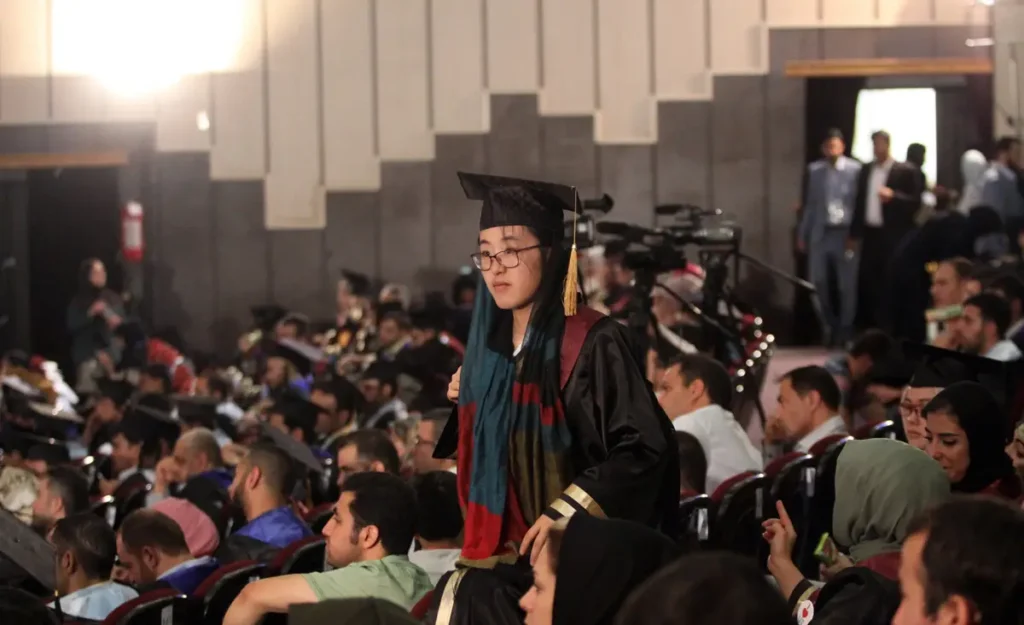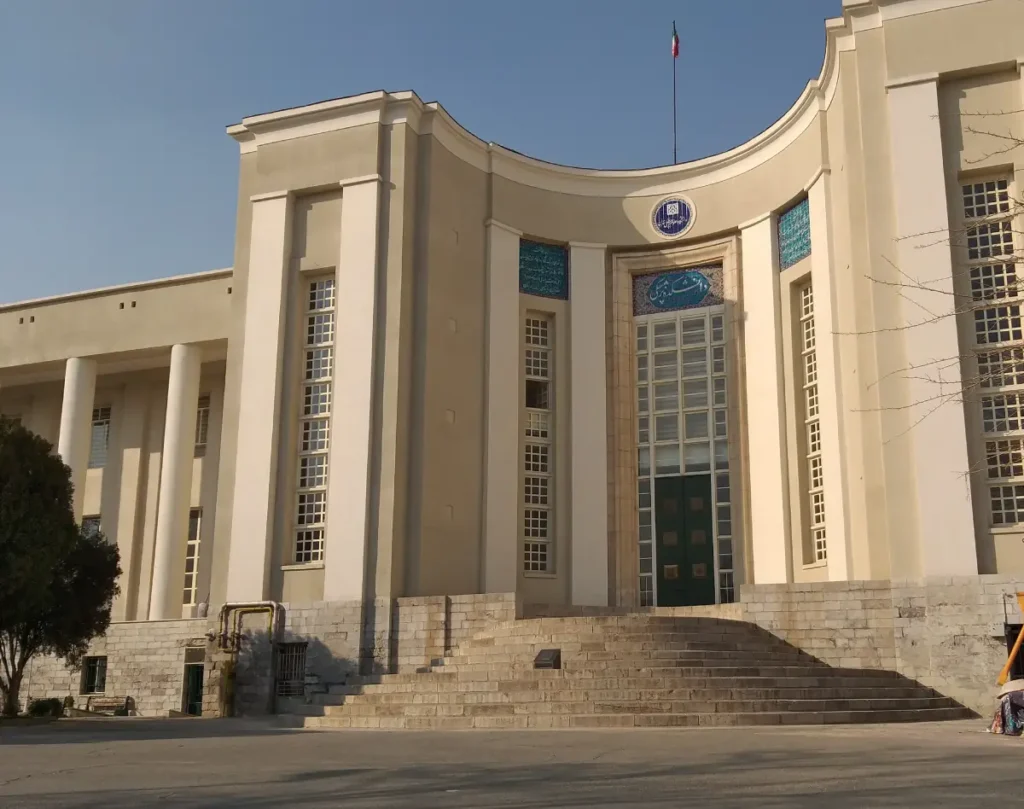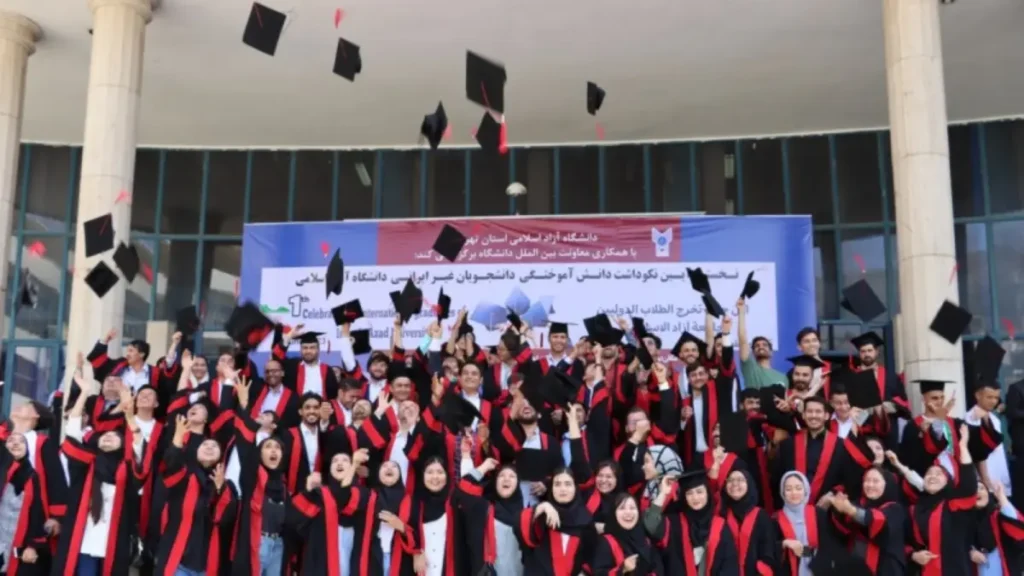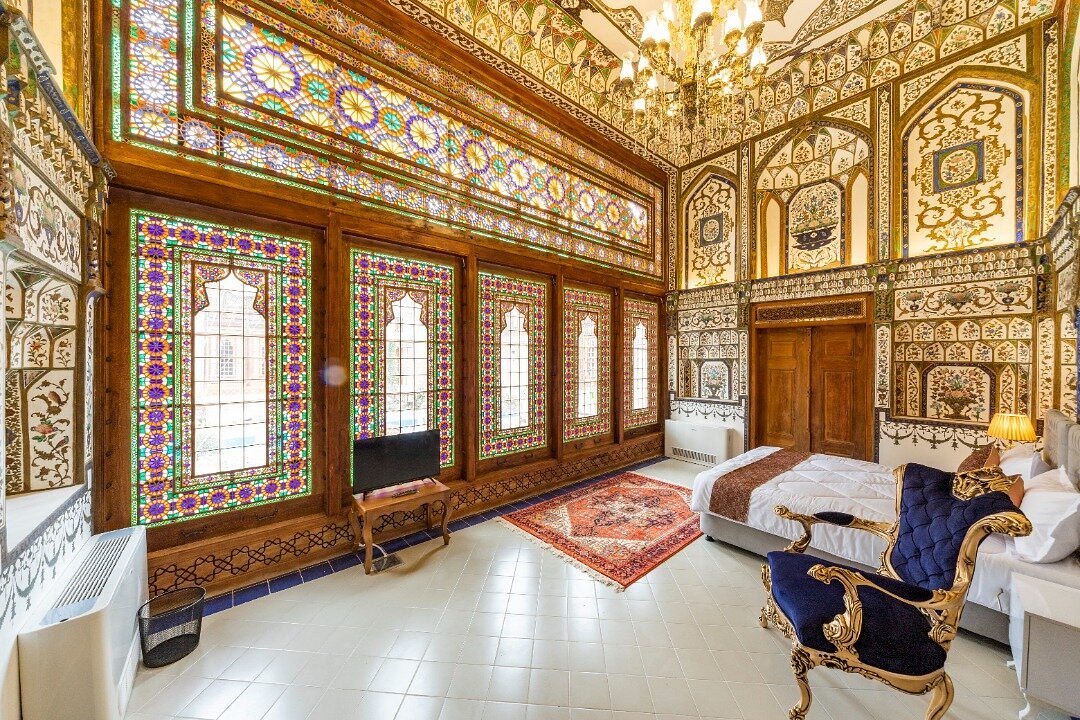Iran is home to over 2,276 universities and academic centers, including more than 180 public and private universities that accept both domestic and international students. These universities offer programs in various fields such as engineering, medicine, humanities, and many others. Studying in Iran can be a cost-effective option for students while also providing a unique cultural and academic experience.
Public universities generally have lower tuition fees, especially for Iranian students, while private universities often charge higher fees. Some programs, such as medicine and postgraduate studies, may also have additional costs due to their specialized nature.
This article will provide a detailed overview of the various costs involved in studying in Iran, including university tuition fees, living expenses, healthcare, and other academic-related costs. By understanding these costs, you can better plan your budgets and manage your expenses while studying in Iran.
Factors Influencing the Cost of Studying in Iran
Before we start to look at the specific costs involved, it’s important to understand that the cost of studying in Iran can vary widely based on several factors. Here’s a breakdown to help prospective students understand what to expect:

Citizenship
The cost of studying in Iran differs for Iranian and international students. In many cases, Iranian citizens pay lower tuition fees at Iranian universities compared to international students.
Level of Education
Costs also vary depending on the level of study. Tuition fees for postgraduate programs like master’s and doctoral degrees are generally higher than for undergraduate or associate degree programs.
Discover why Iran is becoming a top destination for international students in my article, Why Iran is Ideal for International Students: Excellence and Recognition. Explore the country’s affordable education, rich cultural experiences, and globally recognized programs.
Type of University and Programs
The type of university plays a significant role in determining costs. Public universities (state-funded) often have lower fees than private institutions. However, some public universities also offer programs that require higher fees, especially for non-Iranian students.
These fees vary depending on the type of study program (e.g., undergraduate, graduate, doctoral, daytime, evening, or programs at Payame Noor University, University of Applied Science & Technology, non-profit universities, or self-financed campuses).
Tuition and Other Academic Expenses
Tuition fees in Iranian universities depend on the program and field of study. These costs typically include:
• Course tuition
• Books and study materials
• Examination fees
• Other academic necessities
Understanding these factors will help students estimate their expenses and plan their budgets effectively for studying in Iran.

University Fees for International Students in Iran
University fees in Iran for international students are divided into two categories: fixed and variable fees. As mentioned earlier, these fees vary depending on the type of study programs. For example, studying medicine is more expensive compared to other fields.
Fixed and Variable University Fees for International Students
In general, university fees for international students in Iran are divided into fixed and variable costs. Students must pay all these fees to graduate and obtain a valid degree. The fixed and variable fees are usually determined by the university’s board of trustees, and students can find this information on the university’s website.
Fixed fees refer to the amount students must pay per semester, which remains constant based on the year they enroll. These are the base costs for education. Variable fees, as the name suggests, vary based on the specific program and courses taken. Students must pay a certain fee per credit hour for general, specialized, and practical courses, with these costs changing depending on the number of credit hours.
Variable fees can also differ depending on the type of course. For instance, specialized courses tend to be more expensive than general courses, and practical courses generally cost more than theoretical ones. Moreover, non-profit or private universities may have higher fees compared to public ones.
If you’re considering studying abroad, don’t miss our comprehensive guide, Studying in Iran as an International Student.
Tuition Fees in Public Universities for International Students
Tuition fees at public universities for international students differ according to the university’s policies. To get an accurate estimate of costs, contact our support team or the university directly or refer to the university’s website. The minimum fees for public universities are as follows:
• Bachelor’s Degree: $114–$136 per semester
• Master’s Degree: $171–$193 per semester
• Doctoral Degree: $257–$285 per semester
It is important to note that public universities may charge international students up to 80% of the tuition fees for evening programs, according to the policies outlined in the university’s admission guidelines.
Daytime Public University Fees for International Students
Daytime programs at public universities are generally free for Iranian students, but international students are required to pay fees. The advantage of studying in public universities is receiving a recognized degree, which is why many international students choose this option.
Evening Public University Fees for International Students
Evening programs at public universities are non-free programs, meaning both Iranian and international students must pay tuition fees. International students can find detailed fee information on the university’s website or by contacting us.
Payame Noor University Fees for International Students
Payame Noor University offers relatively affordable education for both Iranian and international students. However, the tuition for international students may be slightly higher than for Iranians.
Applied Science and Technology University Fees for International Students
Applied Science Universities divide their fees into fixed and variable costs. International students must pay different amounts each semester, depending on the number of credit hours they enroll in. Tuition fees for these universities can typically be viewed on the university’s website.
Non-Profit University Fees for International Students
Non-profit universities usually calculate tuition fees based on their own regulations. Generally, tuition fees for high-demand fields, such as engineering or medicine, are higher than for other programs. This applies to both Iranian and international students.
Self-Financed Campus Fees for International Students
Self-financed campuses typically charge higher tuition fees in exchange for offering specialized services. The fees for international students in these programs can vary greatly depending on the program and field of study.
Tuition Fees in Azad Universities for International Students
In addition to public universities, international students can also study at Azad universities, which may have lower fees than self-financed campuses. The minimum tuition fees for Azad universities are:
• Bachelor’s Degree: $226 per semester
• Master’s Degree: $100 per semester
• Doctoral Degree: $309 per semester
While Azad universities may have similar fees to public institutions, they can be more expensive for popular fields like medicine. However, non-medical fields tend to be more affordable. Prospective students can choose the best university according to their academic goals and field of interest.

Medical University Fees for International Students
Studying medical sciences is typically more expensive than other programs, and international students should be prepared for these additional costs. The minimum fees for medical studies at public and Azad universities are:
• Bachelor’s or General Medicine: $200–$270 per semester
• Professional Doctorate: $257 per semester
These fees may vary by university and program, and students should check the specific fees for their desired university.
NOTE 1: It’s important to note that it’s common for tuition fees to increase by 10 to 15 percent each year. Universities and institutions typically update their tuition fees on their official websites annually, including fees for self-financed campuses.
NOTE 2: International students who acquire Iranian citizenship during their studies will be exempt from paying further tuition fees. However, if you are enrolled in evening programs or non-free educational institutions such as Payame Noor, University of Applied Science and Technology, non-profit universities, or self-financed campuses, you will still be required to pay tuition fees for your courses and to receive your degree.
Tuition Fees for International Students at Iran’s Top Universities
If you’re considering studying in Iran, it’s important to plan ahead for your tuition and living expenses. Below is a breakdown of the tuition fees for Iran’s top universities, along with additional costs for international students. These fees are provided in U.S. dollars for clarity.
University of Tehran (UT)
At the University of Tehran, the tuition fees for international students vary depending on your field of study and the program level.
For Non-Resident International Students (fees are per semester):
• Persian Language and Literature (Humanities, Social, and Behavioral Sciences): $850 – $1,150
• Other Fields (Humanities, Social and Behavioral Sciences): $1,150 – $1,700
• Arts, Engineering, Basic Sciences, Agriculture, and Veterinary Medicine: $1,500 – $2,150
For Afghan Students and International Students with Iranian Residence:
Humanities, Social and Behavioral Sciences:
• PhD: $650
• Master’s & DVM: $465
• Bachelor’s: $465
Arts, Engineering, Basic Sciences, Agriculture, and Veterinary Medicine:
• PhD: $800
• Master’s & DVM: $600
• Bachelor’s: $600
Tehran University of Medical Sciences (TUMS)
At TUMS, tuition fees for the academic year 2025 are as follows:
Undergraduate Programs:
• Doctor of Medicine (M.D.): $10,000 – $5,000 – $7,500 per year
• Bachelor of Medicine and Surgery (M.B.B.S.): $10,000 – $5,000 – $7,500 per year
• Bachelor of Dental Sciences (B.D.S.): $7,500 – $3,300 – $4,500 per year
Graduate Programs:
• M.Sc. and Master’s Programs: $3,000 per year
• Ph.D. Programs: $5,000 per year
Other Fees:
• Health Insurance: Included in the tuition, depending on the basic health insurance rate.
• Accommodation: Prices depend on the dorm selected.
• Language Classes (if necessary): Persian: $400 (160 sessions), English: $475 (150 sessions)
• Visa: $6 per year (for student entry)
Sharif University of Technology
At Sharif University of Technology, tuition fees for international students are based on your study level and the number of credits you take per semester:
• Undergraduate: €1,000 fixed fee per semester + €20 per credit
• Graduate (M.Sc. and Ph.D.): €1,100 fixed fee per semester + €40 per credit
Shahid Beheshti University (SBU)
At SBU, tuition fees vary based on the field of study and program level:
Undergraduate Programs:
• Human Sciences: 86,266,675 IRR per semester
• Natural Sciences & Engineering: 109,767,500 IRR per semester
Master’s Programs:
• Human Sciences: 85,856,700 IRR per semester
• Natural Sciences & Engineering: 104,001,400 IRR per semester
PhD Programs:
• Human Sciences: 138,095,450 IRR per semester
• Natural Sciences & Engineering: 188,376,900 IRR per semester
Shiraz University
At Shiraz University, tuition fees depend on your program and field of study:
• Non-Experimental Programs (Master’s): $3,500 per semester
• Experimental Programs (Master’s): $4,375 per semester
• Doctorate Programs: $4,000 – $5,000 per semester
Shiraz University of Medical Sciences (SUMS)
At Shiraz University of Medical Sciences, tuition fees are as follows:
Undergraduate Programs:
• Medicine (M.D. and M.B.B.S.): $6,000 per year
• Dentistry (D.M.D.): $6,000 per year
• Pharmacy (Pharm.D.): $6,000 per year
Graduate Programs:
• Master’s (M.Sc./M.P.H.): $5,000 per year
• Ph.D.: $5,000 per year
• Specialty & Subspecialty Programs: $6,000 per year

Cost of Living in Iran for International Students
When planning to study in Iran, it’s important to consider living expenses in addition to tuition fees. On average, you’ll need around $3,600 per year for nine months, covering two academic semesters and the Nowruz vacation. If you plan to stay for the entire year, you should budget at least $4,500. These estimates include costs for accommodation, food, books, transportation, and entertainment. Additionally, you’ll need to account for travel costs to and from Iran at the beginning and end of each academic year.
Breakdown of Living Expenses
These are approximate living expenses and can vary depending on your lifestyle, location, and personal preferences.
Accommodation
For students, dormitories are an affordable option:
• Dormitories in Tehran: $70 per month.
• Dormitories in other cities: $50 per month.
Food
Food expenses vary depending on where you eat:
• Meals at inexpensive restaurants: $2–$9 per meal.
• Groceries (approximate prices):
• Milk (1 liter): $0.50–$0.93
• Bread (500g): $0.20–$1.10
• Eggs (12): $0.60–$1.80
• Chicken fillets (1kg): $2.00–$5.00
• Rice (1kg): $1.40–$3.12
• Cooking your meals can help save money.
Transportation
Public transport in Iran is affordable and convenient:
• One-way ticket on local transport: $0.17–$0.70.
• Monthly pass: $5–$30.
• Taxi fares: $0.20–$0.62 per km.
• Gasoline is inexpensive, costing $0.60–$0.83 per liter.
Entertainment and Leisure
• Fitness club membership: $9.46–$40 per month.
• Cinema ticket: $1–$2.
• Budget-friendly local entertainment options are widely available.
Clothing
• Jeans: $10–$100.
• Running shoes: $60–$200.
• Leather business shoes: $35–$120.
Tips for Managing Costs
• Budget effectively: Track your expenses and prioritize necessities.
• Explore shared accommodations: Living with roommates reduces housing costs.
• Cook at home: Prepare your meals to save on food expenses.
• Use public transport: It’s cheaper than taxis or private vehicles.
Studying in Iran is affordable compared to many other countries, and careful planning can help you manage your expenses while enjoying your time in the country.
Healthcare and Insurance for International Students in Iran
As an international student in Iran, you can access student health insurance by paying a small fee, typically no more than $100 per year. This insurance often extends coverage to your family as well.
Healthcare System in Iran
Iran’s healthcare system is divided into two main sectors: public and private.
Public Healthcare
Public hospitals, clinics, and health centers provide basic medical services, including general medicine, internal medicine, surgeries, and emergency care. These services are available to all residents, including international students, at a lower cost compared to private facilities.
Private Healthcare
Private hospitals, clinics, and specialized medical centers generally charge higher fees but offer additional amenities and specialized services.
As a student, you can choose between public and private healthcare based on your needs and budget.
University Support for International Students
Many universities in Iran offer special health insurance plans for international students, helping cover medical expenses. Some universities also partner with hospitals and medical centers to provide students with affordable healthcare services.
With the combination of affordable insurance, public healthcare, and university resources, international students in Iran can access the medical care they need conveniently and at reasonable costs.
Textbooks and Course Materials Costs for International Students in Iran
The cost of study materials in Iran depends on your course and specific requirements. Typical expenses may include:
• Books and Printing: Costs for textbooks, reference materials, and photocopies.
• Equipment: Items such as calculators or laptops.
• Travel Costs: For research trips, fieldwork, or dissertations.
Keeping Costs Manageable
Most universities in Iran provide resources to help reduce these expenses:
• Libraries and IT Facilities: University libraries often have the books and resources you need, either for free or at minimal cost.
• Departmental Support: Some departments offer grants, particularly for Ph.D. students, to cover costs like research or printing.
Budget Considerations
Generally, these costs can be managed within the recommended $3,600 budget for nine months of living expenses. Universities also guide students on how to manage their study-related expenses effectively. Planning ahead and using available university resources can help ensure that your educational expenses stay within budget.

Student Visa and Administrative Costs
If you apply to universities in Iran through Visit Our Iran, we handle the entire application process for you, including obtaining your student visa. This means you don’t have to worry about managing the paperwork or navigating the visa process on your own.
The costs for these services vary depending on the institution or organization you choose to assist you. When working with us, you receive a complete package that covers university application procedures and visa arrangements, ensuring a smooth and hassle-free process.
Don’t miss my Comprehensive Guide to Iran Student Visa. This detailed article walks you through the entire visa process, from required documents to step-by-step application instructions, ensuring a smooth start to your academic journey in Iran.
Comprehensive Support for Studying in Iran with Visit Our Iran
Starting your academic journey in a new country can be exciting yet challenging, especially when dealing with university applications, visa procedures, and settling into a new environment. At Visit Our Iran, we provide an all-in-one service package to make the process seamless and worry-free. From applying to universities and securing admission to obtaining your student visa, booking your flight, and arranging accommodation, we take care of everything. Our goal is to ensure you focus on your studies and enjoy the enriching experience of life in Iran.
Our team of experts will guide you through every step, helping you gather required documents such as enrollment certificates, financial proofs, and health insurance. We stay updated on visa policies and university requirements to provide reliable and timely assistance. Additionally, we offer ongoing support even after your arrival, helping you settle in and make the most of your time as a student. For personalized consultation and support, reach out to us today and let us turn your dream of studying in Iran into reality!
Scholarship Applications for International Students in Iran
Iran offers scholarships to international students as part of its strategic and developmental policies outlined in the Sixth Development Plan. These scholarships are administered by the Ministry of Science, Research, and Technology and the Ministry of Health and Medical Education. Here’s what you need to know about the process and requirements:
Application Process
Initial Screening: Applications are reviewed by the Scholarship Council for International Students within the Ministry of Science, Research, and Technology. This council assesses the academic and general eligibility of applicants.
Final Admission: Once approved, students are introduced to the designated universities by the Ministry of Science or the Ministry of Health.
Documentation and Follow-Up: The Directorate General for International Students manages applicants’ records and ensures implementation of council decisions.
Required Documents
To apply, you need the following:
- A letter from the Ministry of Science or the Ministry of Health.
- Proof of enrollment and transcripts from a foreign university, certified by an Iranian embassy in your country.
- A scanned copy of your passport pages.
- A biometric photo (6×4 cm, colored, recent, without a hat or glasses).
Key Regulations
Scholarships in Iran come with specific eligibility criteria and benefits:
• Age Limits: Applicants must meet the following age requirements:
• Bachelor’s Degree: Maximum age 22 years.
• Master’s Degree: Maximum age 26 years.
• Ph.D.: Maximum age 31 years.
Financial Aid: Scholarships provide essential benefits, including tuition fee waivers, single-student dormitory accommodation, and health insurance coverage.
Exclusions: It’s important to note that travel expenses, such as airfare or other transportation costs, are not included in the scholarship package.

Part-Time Work Opportunities for Students
In many countries, including Iran, students can take up part-time jobs to support their studies. While the specific rules may vary, students are often allowed to work up to 20 hours per week during the academic term, with some flexibility during holidays. However, the income from part-time jobs is generally not enough to cover tuition fees but can help with smaller expenses such as food, travel, or personal costs.
The type of work available depends on your skills, qualifications, and previous work experience. Part-time jobs not only provide financial support but also give students a chance to gain real-world experience, improve communication skills, and interact with local communities. Opportunities are usually more accessible for graduate or research students, as their programs often offer teaching or research assistant positions.
Is Studying in Iran Affordable?
Iran offers a cost-effective option for international students, combining quality education with affordable living expenses. Tuition fees are reasonable compared to many other countries, making it a practical choice for those seeking higher education without excessive costs. Dormitories provide a budget-friendly housing option, and academic expenses like books and materials are also affordable.
Daily living costs, including food, transportation, and utilities, are manageable for students. Fresh local produce, traditional meals, and inexpensive leisure activities make it easier for students to balance their studies with an enjoyable lifestyle. Iran’s affordability and cultural richness make it an appealing destination for international students.
If you still have any questions about studying in Iran, feel free to contact us for more details. We’re here to guide you through the process and provide the information you need.

